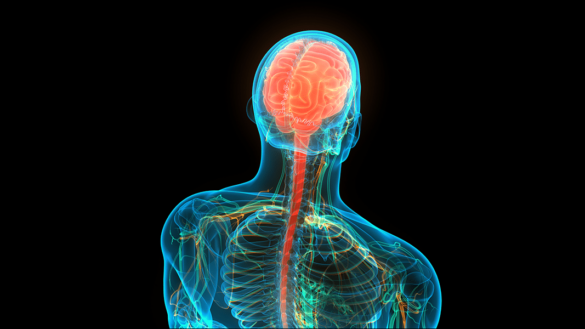The Untapped Potential of CB2: Exploring its Role in Mental Health
Beyond Cancer: The Expanding Influence of CB2
Table of Contents
- Beyond Cancer: The Expanding Influence of CB2
- A Legacy of Discovery: Mechoulam’s Final Chapters on CB2 and Mental Health
- CB2 and Schizophrenia: A Potential Anti-Psychotic Avenue?
- CB2 and Depression: A New Frontier in Antidepressant Research
- Understanding CBDA-ME and its Antidepressant Effects
- The Role of the CB2 Receptor
- Targeting CB2 in Neurological Disorders
- Understanding CBAME: A Closer Look at Its Properties
- CBAME’s Potential in Mental Health
- CBAME’s Role in Neurological Disorders
- The Future of CBAME Research
- Conclusion
In our previous exploration, we delved into the fascinating world of the CB2 cannabinoid receptor and its potential role in cancer proliferation. This week, we shift our focus to another intriguing facet of CB2’s influence: its impact on psychiatric and mood disorders, despite not being primarily concentrated within the central nervous system (CNS). While its sibling, the CB1 receptor, reigns supreme in the CNS, mediating the intoxicating effects of THC, CB2 holds a more prominent position in the peripheral nervous system. Here, it orchestrates a symphony of functions, including inflammation regulation, pain management, and neuroprotection. Interestingly, CB2 also exists in smaller quantities within the brain, where it modulates dopamine signaling, neuroinflammation, and neurogenesis.
A Legacy of Discovery: Mechoulam’s Final Chapters on CB2 and Mental Health
The late visionary cannabinoid scientist Raphael Mechoulam, who passed away at the age of 92 just last year, remained deeply invested in research investigating CB2’s role in a wide range of diseases. His final papers, along with two insightful reviews published around the same time, shed light on the potential of CB2 in addressing mental health challenges.
CB2 and Schizophrenia: A Potential Anti-Psychotic Avenue?
A paper co-authored by Brazilian scientists affiliated with the University of São Paulo, published in the journal *Progress in Neuro-Psychopharmacology & Biological Psychiatry* in July 2022, delves into CB2’s role in schizophrenia. This debilitating condition, characterized by psychosis, manifests as hallucinations, delusions, disorganized thinking, social withdrawal, diminished emotional expression, and apathy. The authors highlight that the CB2 receptor modulates dopaminergic neurotransmission, which is known to be abnormally heightened in individuals with schizophrenia.
Intriguingly, they investigated the effects of HU-910, a synthetic research compound that selectively activates the CB2 receptor, on rodent models of schizophrenia. Through a series of behavioral assessments, they discovered that HU-910 administration indeed produced anti-psychotic-like effects mediated by the CB2 receptor. This finding suggests promising avenues for further research into the therapeutic potential of this compound in treating schizophrenia.
However, it’s crucial to approach this conclusion with caution. Cannabinoid receptors are not simple on/off switches. As TheTrendyType has previously discussed regarding proposed therapies for bone disease, Alzheimer’s Disease, and autoimmune dysfunction, selective CB2 agonists have thus far yielded disappointing results in clinical trials due to unforeseen consequences and adverse effects stemming from the receptor’s widespread influence throughout the body.
CB2 and Depression: A New Frontier in Antidepressant Research
One of Mechoulam’s final published works, among his impressive 379 articles listed on PubMed, focuses on the role of the CB2 receptor in mediating the antidepressant effects of cannabidiolic acid-methyl ester. This research highlights a potential new avenue for developing effective treatments for depression, a condition that affects millions worldwide.
Cannabidiol Acid Methyl Ester and the CB2 Receptor: A Potential New Frontier in Depression Treatment?
Understanding CBDA-ME and its Antidepressant Effects
A recent study published in the *International Journal of Molecular Sciences* sheds light on a potential new avenue for treating depression. The research, titled “Cannabinoid Receptor 2 Blockade Prevents Anti-Depressive-like Impact of Cannabidiol Acid Methyl Ester in Feminine WKY Rats,” explored the role of CBDA-ME, a synthetic analog of cannabidiolic acid (CBDA), in alleviating depressive symptoms.
CBDA is the precursor to CBD, found naturally in cannabis plants. However, it converts into CBD when exposed to heat or light, making it challenging to study directly. CBDA-ME offers a stable alternative for research purposes. First described in 1969 by Mechoulam and colleagues, this compound has demonstrated anxiolytic, anti-hyperalgesic, and antidepressant effects in male rodents at low doses.
The Role of the CB2 Receptor
In their study, Israeli researchers investigated the antidepressant effects of CBDA-ME in female rats using a standard behavioral test known as the “forced swim test.” Their findings revealed that an artificial CB2 antagonist called AM-630 blocked the antidepressant effects of CBDA-ME specifically in females, but not in males. This suggests that the CB2 receptor plays a crucial role in mediating the compound’s therapeutic effects in female rats.
While these results are promising, the authors acknowledge that further research is needed to fully understand the mechanisms underlying CBDA-ME’s antidepressant action and its potential implications for treating depression in women.
Targeting CB2 in Neurological Disorders
The significance of the CB2 receptor extends beyond depression. Two recent reviews published in 2022 provide a broader perspective on its role in various neurological and psychiatric conditions, including addiction, anxiety, Huntington’s disease, and Parkinson’s disease.
A review in *International Journal of Molecular Sciences*, co-authored by Emmanuel Onaivi at William Patterson University and Japanese scientists, concludes that CB2 receptors are highly expressed in neuropsychiatric and neurodegenerative disorders. Selective CB2 ligands show promise in managing the symptoms of these conditions. However, the authors emphasize the need for further research to explore potential side effects associated with targeting CB2.
Another review published in *Frontiers in Psychiatry* highlights recent findings demonstrating the presence of CB2 receptors in various brain regions and cell types, including neurons and glia. This suggests a close link between the immune system and brain circuits regulating inflammation, mood, and cognitive function via the CB2 receptor. The authors propose that future research should focus on elucidating the crucial connection between CB2, inflammation, and psychiatric disorders.
Read part 1 of this 2-part series: Cancer & the CB2 Receptor
Bridging the Gap: The Potential of Cannabidiolic Acid Methyl Ester (CBAME)
Cannabidiol, often shortened to CBD, has gained significant traction in recent years for its potential therapeutic benefits. While CBD itself is well-known, a lesser-known compound called cannabidiolic acid methyl ester (CBAME) is emerging as a promising alternative with unique properties. CBAME, a naturally occurring cannabinoid found in the cannabis plant, offers a range of potential applications, particularly in addressing mental health concerns and neurological disorders. This article delves into the science behind CBAME, exploring its mechanisms of action, therapeutic potential, and future prospects.
Understanding CBAME: A Closer Look at Its Properties
CBAME is a non-psychoactive compound, meaning it does not produce the ”high” associated with THC. Unlike CBD, which is typically consumed as an oil or capsule, CBAME can be administered orally or topically. Research suggests that CBAME interacts with various receptors in the body, including the endocannabinoid system (ECS), a complex network of neurotransmitters and receptors involved in regulating mood, sleep, appetite, and pain perception. By modulating these receptors, CBAME may exert its therapeutic effects.
CBAME’s Potential in Mental Health
Emerging evidence suggests that CBAME holds promise for treating mental health conditions such as anxiety and depression. Studies have shown that CBAME can reduce anxiety-like behaviors in animal models and has demonstrated antidepressant effects in preclinical studies. These findings suggest that CBAME may offer a novel therapeutic approach for individuals struggling with these debilitating disorders. For more information on managing anxiety, visit our comprehensive guide: Anxiety Management.
CBAME’s Role in Neurological Disorders
Research also indicates that CBAME may have potential benefits for neurological conditions such as epilepsy and multiple sclerosis. Studies have shown that CBAME can reduce seizure activity in animal models of epilepsy and has neuroprotective effects in preclinical studies of multiple sclerosis. These findings highlight the potential of CBAME as a therapeutic agent for managing these complex neurological disorders.
The Future of CBAME Research
While research on CBAME is still in its early stages, the existing evidence suggests that it holds significant promise for treating a range of conditions. Further clinical trials are needed to fully understand its efficacy and safety profile. However, the preliminary findings are encouraging and pave the way for future development of CBAME-based therapies.
Conclusion
CBAME is emerging as a promising cannabinoid with unique therapeutic potential. Its ability to modulate various receptors in the body, particularly those involved in mood regulation, pain perception, and neuroprotection, suggests its potential applications in treating mental health conditions, neurological disorders, and other ailments. As research progresses, we can expect to gain a deeper understanding of CBAME’s mechanisms of action and its full therapeutic potential.


